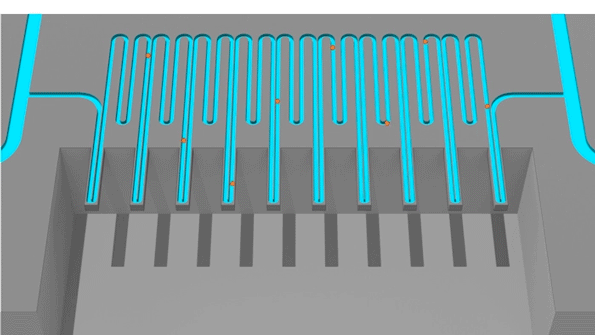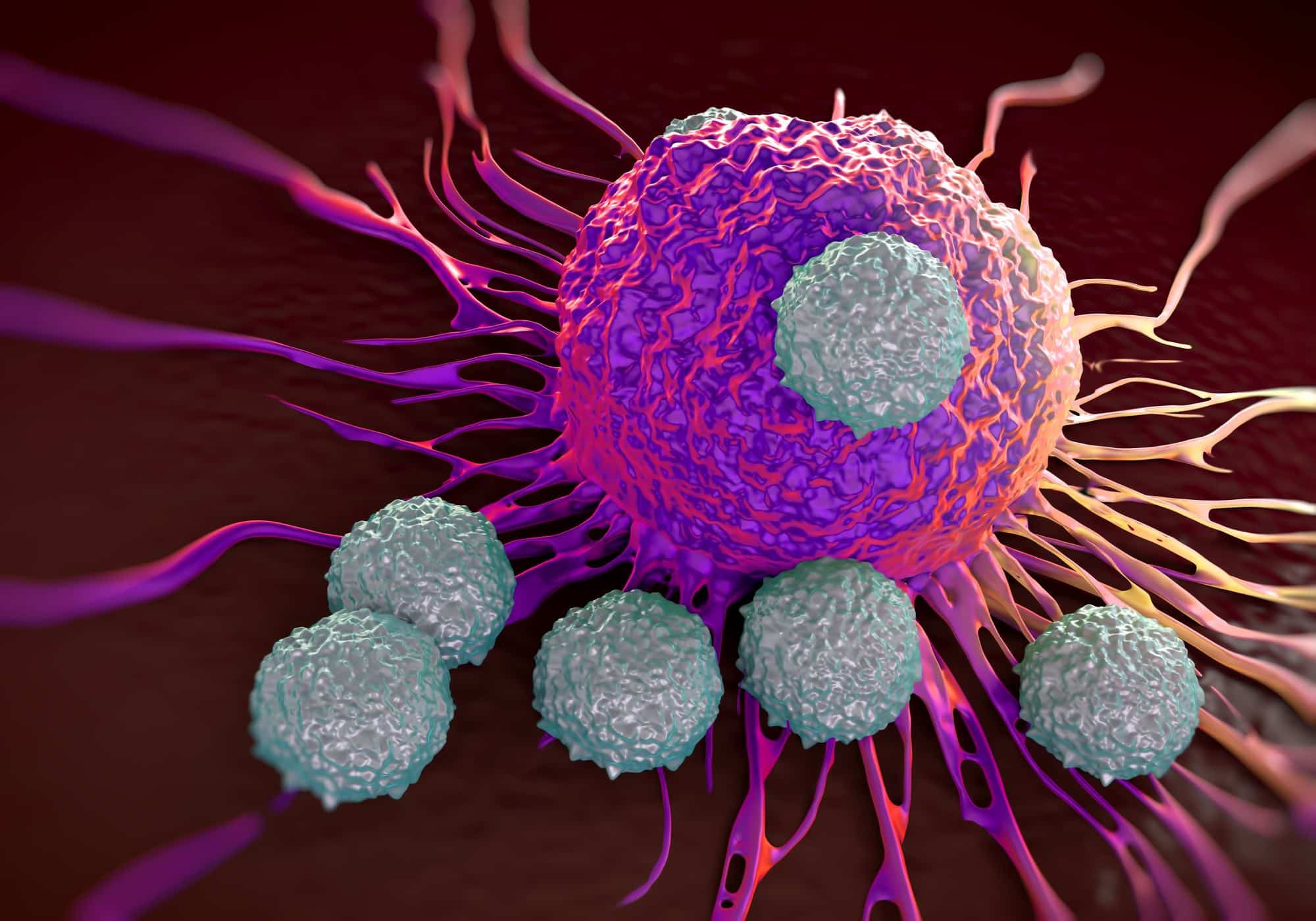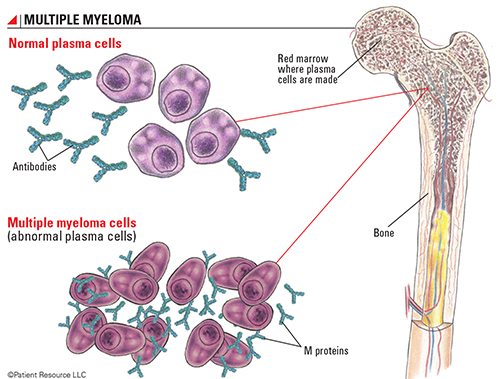Correlation between Cancer Cell Mass and Chemo Susceptibility
Multiple myeloma (MM) is characterized by the accumulation of clonal plasma cells in the bone marrow.
When B cells respond to an infection, they mature and change into plasma cells. Plasma cells make the antibodies (also called immunoglobulins) that help the body attack and kill germs. Lymphocytes are in many areas of the body, such as lymph nodes, the bone marrow, the intestines, and the bloodstream. Plasma cells, however, are mainly found in the bone marrow. Bone marrow is the soft tissue inside some hollow bones. In addition to plasma cells, normal bone marrow has cells that make the different normal blood cells.
When plasma cells become cancerous and grow out of control, they can produce a tumor called a plasmacytoma. These tumors generally develop in a bone, but they are also rarely found in other tissues. If someone has only a single plasma cell tumor, the disease is called an isolated (or solitary) plasmacytoma. If someone has more than one plasmacytoma, they have multiple myeloma.
Therapeutic advances have greatly reduced the morbidity and mortality in this disease through the incorporation of novel-targeted agents such as proteasome inhibitors, (e.g. bortezomib and carfilzomib), immunomodulatory drugs (lenalidomide, pomalidomide), novel antibodies (daratumumab and elotuzumab
), and HDAC inhibitors in a treatment regimen that includes traditional chemotherapeutic agents and high-dose therapy with stem cell transplants.Despite these advances, MM remains incurable in the vast majority of patients although there is a high degree of variability in patient survival. This variability is in part due to the heterogeneity of the disease at the molecular, clonal, and cellular level, which affects MM cells’ susceptibility and resistance to therapies.
Researchers at MIT have now shown that they can use a new type of measurement to predict how drugs will affect cancer cells taken from multiple-myeloma patients. Furthermore, they showed that their predictions correlated with how those patients actually fared when treated with those drugs.
“For infectious diseases, antibiotic susceptibility testing based on cell proliferation has been extremely effective for many decades,” says Scott Manalis, the Andrew and Erna Viterbi Professor in the MIT departments of Biological Engineering and Mechanical Engineering and a member of MIT’s Koch Institute for Integrative Cancer Research. “Unlike bacteria, analogous tests for tumor cells have been challenging, in part because the cells don’t always proliferate upon removal from the patient. The measurement we developed doesn’t require proliferation.”
The researchers’ new strategy is based on technology incorporated in their device, known as a suspended microchannel resonator (SMR), can measure cell masses 10 to 100 times more accurately than any other technique, allowing the researchers to precisely calculate growth rates of single cells over short periods of time.
The device can measure 50 to 100 cells per hour and weigh each cell 10 times over a 20-minute period, which is sufficient for an accurate MAR measurement. Encouragingly, the technique can be used with the relatively limited numbers of cells obtained from bone marrow biopsies, which makes it suitable for applications in MM.
The researchers first used the device to determine MAR as a measure of the sensitivity of single cells from well-characterized MM cell lines to standard-of-care (SOC) treatments, including bortezomib, dexamethasone, lenalidomide, and combinations of therapy. In each case, the MAR of the cells decreased if they were sensitive to therapy, and remained roughly the same if the cells were resistant to their given treatment. The approach also allowed the researchers to evaluate experimental MM therapies, including the BET inhibitor JQ1 and a peptide therpaetic targeting the E2F/DP1 interaction, “highlighting the potential of functional MAR measurements to assess therapeutic response in research setting,” they write.

One of the difficulties in treating multiple myeloma is choosing among the many drugs available. Patients usually respond well to the first round of treatment but eventually relapse, at which point doctors must choose another drug. However, there is no way to predict which drug would be best for that particular patient at that time.
“At this time of relapse, we would take a bone marrow biopsy from a patient, and we would test each therapy individually or in combinations that are typically used in the clinic. At that point we’d be able to inform the clinician as to which therapy or combinations of therapies this patient seems to be most sensitive or most resistant to,” Stevens says.
The new test holds “great promise” to screen myeloma cells for drug susceptibility, says Kenneth Anderson, a professor of medicine at Harvard Medical School and Dana-Farber Cancer Institute, who was not involved in the research.
“This assay may fast-forward personalized medical care and the choice of effective therapies for myeloma both at diagnosis and at relapse,” Anderson says. “It may also be useful to profile susceptibility of minimal residual disease in order to further inform therapy and improve patient outcome.”
The technique requires very few cells, so it is possible to test a wide variety of drugs and drug combinations on a sample from just one biopsy. To validate the approach, the research team have started a company to carry out a larger clinical study. They also have plans to see if the technique will work for other types of cancer.































